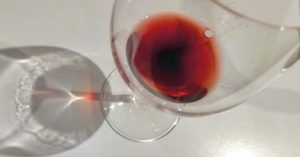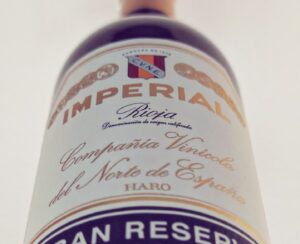As a group of friends gathered together to celebrate a special 50th birthday back in the first month of 2020, before Covid took a stranglehold on the world, the anticipation of a 50-year-old wine about to be poured started to build among the group. The wine would be poured blind and the only clues were that it was from 1970 and it was obviously red by the garnet color. The extraordinarily complex nose made one of the friends shout out, “Pomerol!” as he remembered that the ‘70 Château Trotanoy, a Right Bank Bordeaux located in the commune of Pomerol, was still showing beautifully but then another friend noted that the ethereal and enchanting delicacy of the wine would suggest a Barolo from Piedmont, Italy, and perhaps a great producer such as Conterno the friend added; but then another suggested Chappellet from Napa Valley with vineyards located at high elevations in Pritchard Hill and she remembered that their 1970s bottlings were showing really well recently.
Obviously many had done their homework as they scoured the internet for 1970 bottlings that were still in ideal shape before attending this festive celebration of life as well as searching their own notes of older wines they had tasted within the past five years or so.
But the birthday boy who had poured the wine smiled and said that no one was close as neither the main variety nor even the country was guessed and he took off the paper bag disguising the bottle to reveal to everyone’s shock that it was a bottle of Rioja from Spain; but not just any bottle of Rioja, it was a CVNE Imperial Gran Reserva that had over 80% of Tempranillo and the remaining, most probably, being other local Spanish varieties commonly used in Rioja such as Graciano and Mazuelo.
Tempranillo in Rioja and Ribera del Duero
The wine appellation of Rioja has done a spectacular job of introducing the world to the incredible Spanish grape variety Tempranillo which makes up the majority, sometimes 100%, of a Rioja red wine. But because the tannins of the Tempranillo grape variety can many times seem well-integrated with not too many harsh edges, combined its moderate acidity, it is a wine that can be completely enjoyed young whether it is the ‘Joven’ Rioja wines that sees very little oak and displays the red fruited beauty of the grape or enjoyed older as a Gran Reserva Rioja wine that requires at minimum 60 months of aging (combination of barrel and bottle) before it can be released onto the market and display the multi-layered complexity of aromas and flavors that many would deem as being in its prime.
But even though the highest categories of wines such as Rioja Reserva and Gran Reserva have certainly become known and loved throughout the world over the past few decades as they are evolved wines ready to drink, when it comes to acquiring extremely older wines, or cellaring them for 20 years or more, Rioja and its Tempranillo grape are not on the top of the list of wines that one thinks of making great old bones that would gracefully age up to 50 years.
But those collectors of the great wines of Spain know better – they know that a great vintage of CVNE Imperial Gran Reserva or Viña Real Gran Reserva can hold up to any great Bordeaux, Barolo or Napa wine when it comes to elegantly aging for many, many decades. The grape varieties that dominate the top of the list of those wines known for great longevity certainly first start with Cabernet Sauvignon as well as Merlot dominated wines especially from Pomerol and of course the king of Italian wine grape varieties – Nebbiolo right behind it – but there are still many wine drinkers around the world who do not know the full power of Tempranillo.
The CEO and fifth-generation family owner of CVNE, Victor Urrutia, described Tempranillo as a “variety well-suited for aging” and his opinion is rooted in the fact that his family has made wines in Rioja going back to the “beginning of the 20th century” that have stood the test of time. But Tempranillo’s ability for a long life is also dependent on the health of the vines, the vineyards, how the grapes are harvested as well as everything that happens in the cellars, according to Victor. CVNE is well-known for owning top vineyards throughout Rioja and Victor particularly brought attention to their high-elevation limestone based vineyards that are dry-farmed in regards to giving an example for growing high quality Tempranillo.
Victor discussed that their Rioja wines that come from the heart of the village of Haro in the northern area of Rioja Alta (one of three zones of the Rioja wine region) tend to have a “leaner edge, more acid and a lighter body” and overall they tend to be more “classic” Rioja wines; the CVNE Imperial is a good example. But another zone called Rioja Alavesa “is more diverse” in the range of styles, as Victor explains, and in recent times there have been a range of producers making “excellent wines from specific vineyards”. In general he notes that the best Rioja Alavesa wines are “more full-bodied” that typically have more “power”; and so his CVNE Viña Real and Viñedos del Contino wines, located in Rioja Alavesa, are the other side of great Rioja.
The CEO and owner of Tempos Vega Sicilia which includes the legendary Vega Sicilia estate in Ribera del Duero (the other home for Tempranillo), Pablo Álvarez, spoke about his love for the Tempranillo grape by saying, “It is an exceptional variety and for us, the best variety in the world when its maturation is perfect.” But Ribera del Duero, which is around 125 miles southwest of Rioja, has more extreme climatic conditions and intense swings in temperatures, where frost risk is much higher, produces grapes from the best vineyards of Tempranillo that have an incredible combination of concentration, structure and acidity that make the wines very long-lived. The famous ‘Unico’ from Vega Sicilia which today is made up of 95% Tempranillo (called Tinto Fino in Ribera del Duero) is typically released after ten years of aging in both barrel and bottle; although in the past, for example the 1970 vintage, had less Tempranillo in the blend – although still a significant 70% dominating it – it was more of a matter of Pablo through time discovering how to get the best out of the Tempranillo vines on the Vega Sicilia estate so he could increase its percentage in the blend. Unico has certainly won over many a Bordeaux wine collector and it is considered one of the greatest wines in the world, not just Spain.
Although Pablo makes one of the most famous Tempranillo dominant wines in the fine wine world, he is still fascinated by other areas of Spain such as the classic wine region of Rioja and so he also has a winery called Macán in the North East area of Rioja Alta near the foothills of the Sierra Cantabria mountains; Pablo loves the subtle nuances and the overall elegance from their Macán estate that makes 100% Tempranillo wines. He is still discovering what the vineyards are capable of and the different methods in the winery to best express the terroir but he is excited for the future of these wines and the different type of greatness that Macán will be able to express.
But even a producer that is known for great value Tempranillo in Rioja understands that reminding the world of the incredible ageability of the grape from its classic home is important in regards to having a true respect for its potential; and so Bodegas Montecillo, the third oldest winery in Rioja at over 150 years old celebrated their 150th anniversary in 2020 by releasing bottles of a special 150th anniversary Gran Reserva edition of the 2005 vintage as well as recently releasing bottlings of 1973, 1982, 1994 and 2001. Since their wines are widely known to over-deliver for their modest pricing, one tends to not consider the cellaring potential of them. Montecillo’s winemaker, Mercedes García Rupérez, spoke about how making wines built for aging has always been a priority at the winery from the very beginning that is best represented by their 19th-century cellar that has Montecillo bottles that go back as far as 1926; yet when a producer has been listed on the “best value” lists of top wine magazines many times, it is easy to see how one discounts the ageability of their highest quality wines.
Surrendering to What One is Supposed to Be
“It is of another world… a world that values a quiet beauty and subtle complexity that makes one have to be very quiet to truly understand its power,” the woman who tasted the 1970 CVNE Imperial Gran Reserva Rioja blind noted. Once she found out that it was from a wine region and grape variety that is viewed as not being equal to Bordeaux or Barolo when it comes to its tenacity to thrive for many decades, her face lit up with a big smile. Yes, Tempranillo does not innately have the harshness of a rough tannic structure or fierce acidity in its relative youth that traditionally would be considered a wine ideal to cellar but that is what makes it so heavenly as it does not loudly pronounce its superiority but instead it comes with humility and generosity at every stage of its life.
It made this woman smile because it just reaffirmed that one needs to stay true to herself no matter whether she is appreciated by the outside world because all she needed was just one person in one moment to recognize her incredible potential beyond her sweet and kind countenance – as losing that sweetness was not an option. As in that moment she fully recognized the power of Tempranillo in that glass… a glass of wine that fully allowed the world to see what it was and where it came from without trying to be anything else than what it is supposed to be.














